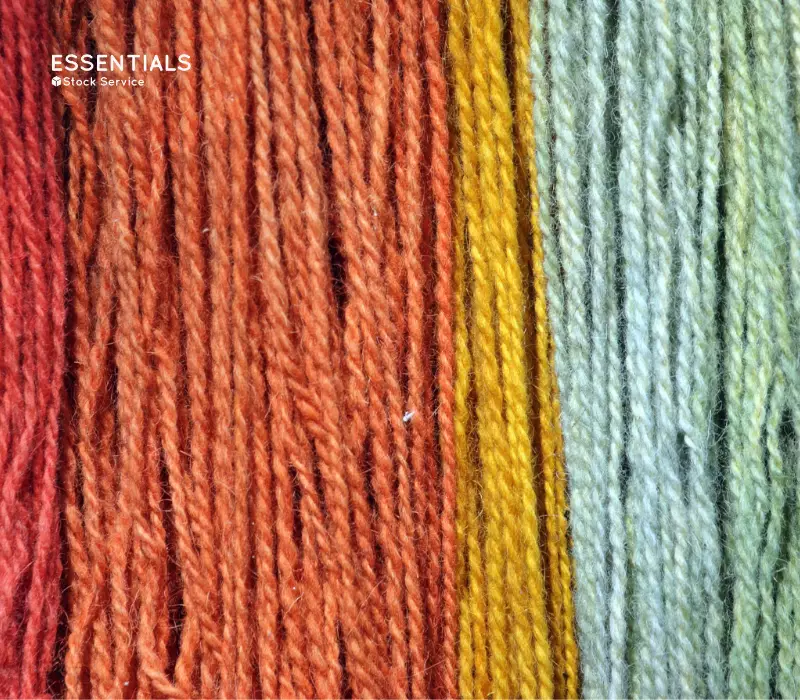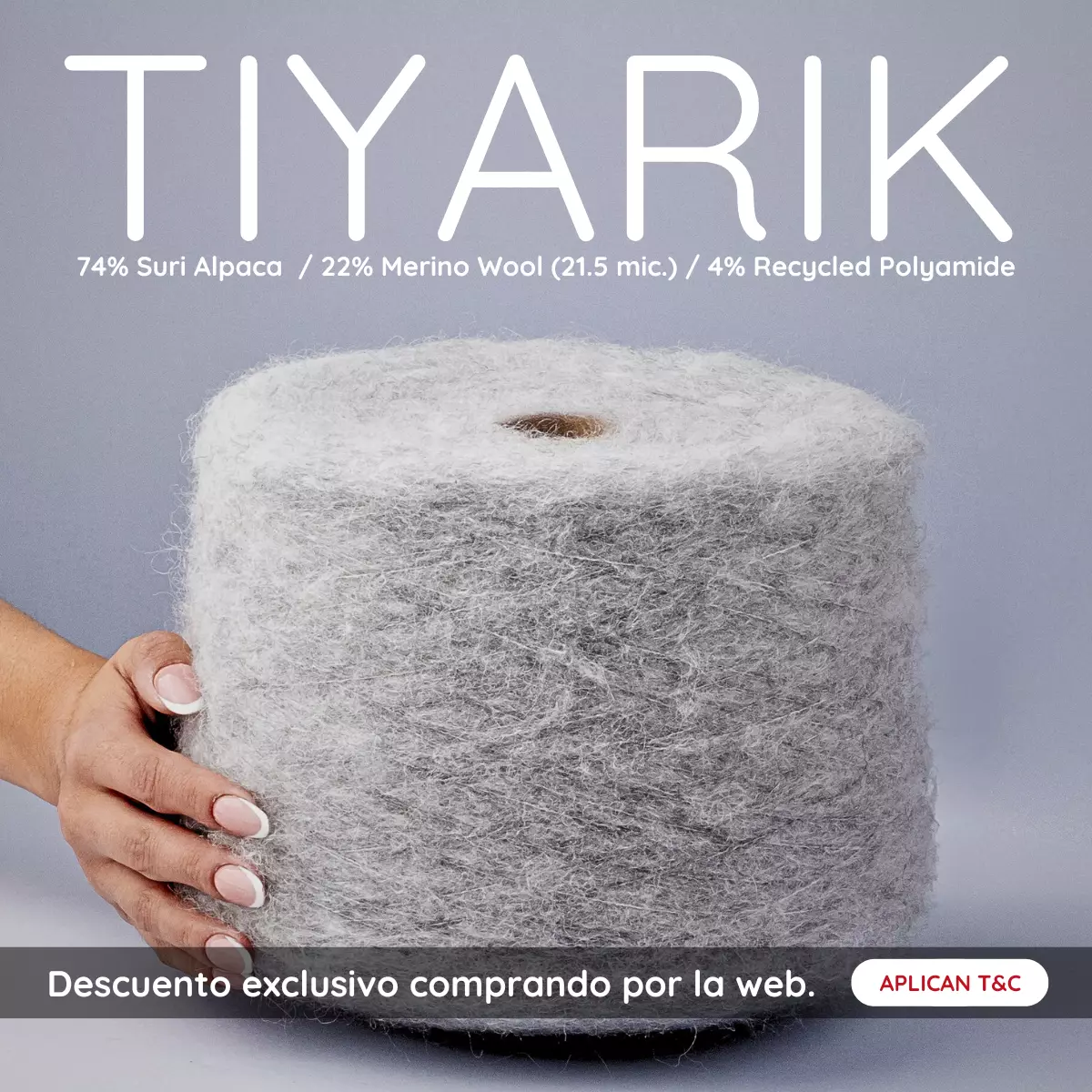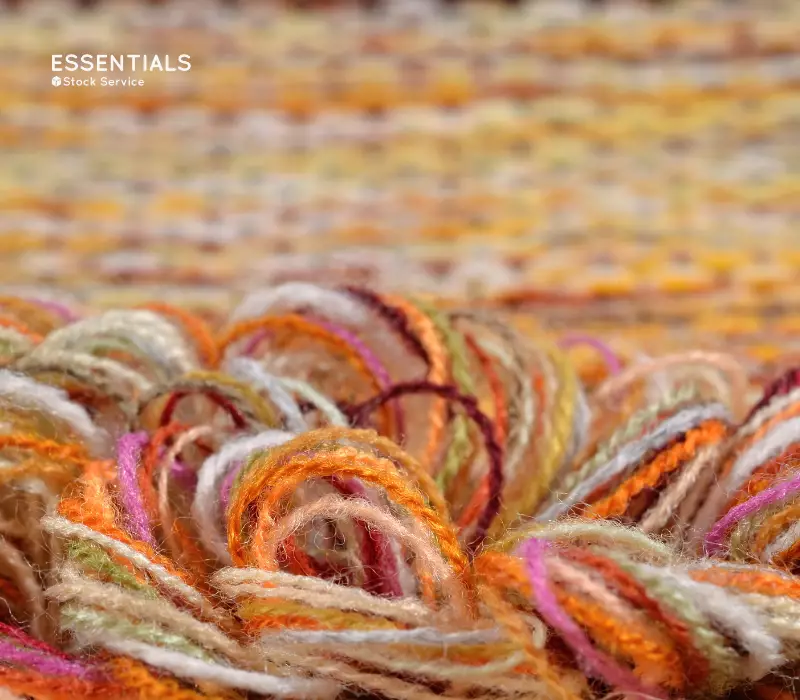Choosing the right yarn isn’t just an aesthetic decision, it’s a choice that defines the quality, functionality, and durability of every finished piece.
At ESSENTIAL STOCK SERVICE, we work with natural fibers like baby alpaca, royal alpaca, and merino wool in 1 kg cones, designed for demanding creators, from B2B clients to individual makers.
This article is based on real conversations with our customers, from independent designers to established textile brands, who’ve faced these mistakes and learned how to avoid them.
1. Choosing based only on color or texture without considering the project
Imagine you’re designing a baby blanket. You fall in love with a rustic-textured yarn in vibrant colors, but once you start knitting, you realize the fiber is scratchy and lacks the softness needed. This mistake is more common than you think.
Choosing impulsively based on color or texture alone can compromise the final result. A bulky yarn can distort a delicate pattern, and a rough fiber can be uncomfortable for garments that touch the skin.
Useful stat: According to The Knitting Guild Association (2022), 68% of project errors stem from choosing yarn that doesn’t match the intended use.
2. Ignoring the yarn type based on season or use
A merino wool scarf is perfect for winter, but what happens if you use the same yarn for a summer blouse? You’ll end up with a hot, heavy, and impractical garment.
Each fiber has different thermal and breathable properties. At ESSENTIAL STOCK SERVICE, we offer alpaca blends that regulate body temperature, ideal for cold climates, while cotton and linen are better suited for warmer seasons.
🧵 Recommended blend: TIYARIK – 74% Suri Alpaca / 22% Merino Wool (21.5 mic.) / 4% Recycled Polyamide.
Real example: A design brand in Cusco shared that after using acrylic in thermal garments, their customers reported discomfort and excessive sweating. After switching to royal alpaca, perceived quality and comfort improved dramatically.
3. Overlooking yarn twist and structure
Yarn twist directly affects how stitches behave. Low-twist yarns can unravel easily, while high-twist yarns may feel stiff and cause pilling.
This technical detail is often ignored, but it’s essential for a professional finish. Make sure each cone is designed with controlled twist to ensure stitch stability and reduce wear.
Technical insight: A study in the Textile Research Journal (2021) found that medium-twist yarns show 35% less pilling in frequently worn garments.
4. Disregarding the original pattern’s recommendations
Every pattern is designed with a specific yarn type in mind. Changing it without considering weight, tension, or yardage can completely alter the outcome.
One customer told us she tried adapting a shawl pattern written for baby alpaca fingering to a bulky yarn. The result was a piece three times larger, with no drape or definition, the pattern lost its essence.
Technical tip: Always check the recommended yarn weight, tension swatch, and fiber type. If you switch yarns, test and adjust before committing.
5. Buying without calculating how much yarn is needed
This mistake can cost you time, money, and frustration. Buying too little forces you to hunt for the same dye lot (often impossible), while buying too much leads to waste or unnecessary investment.
At ESSENTIAL STOCK SERVICE, we offer cones starting from 1 kg, making it easier to plan large-scale projects and ensuring consistency in color and texture.
Practical example: For a size M sweater in stockinette stitch using baby alpaca sport yarn, you’ll need approximately 800 g. If you use lace stitch, you can reduce consumption by up to 20%.
For this kind of garment, a great choice is TRILOGY, a refined blend of 54% Baby Alpaca, 22% Super Kid Mohair, and 24% Mulberry Silk, perfect for lightweight, soft, and elegant finishes.
And if you’re looking for a more textured and sustainable alternative, ALPALOOP 5 is ideal: 89% Superfine Alpaca / 11% Recycled Polyamide, offering a modern look and excellent performance for knitwear.
Conclusion: Knit with intention and purpose
Choosing the right yarn is an act of respect, for your project, your client, and your time. At Essentials, we believe every fiber tells a story, and avoiding these mistakes is the first step toward creating garments that truly matter.
If you’re developing a collection, a custom product, or simply want better results, we invite you to explore our natural fibers. Because great knitting starts with smart choices.






